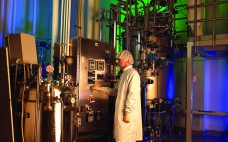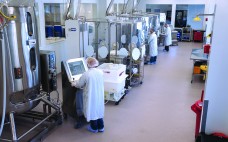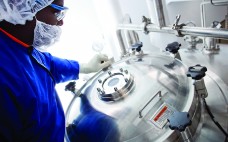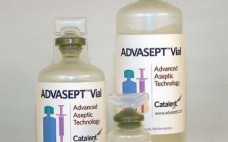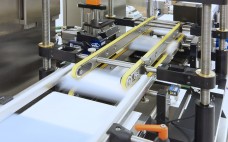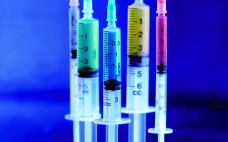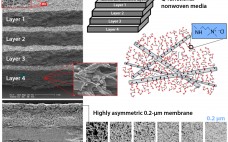Ray Price (senior director of business development, DiscoveRx) 3:30–3:55 pm Advances in Research Tools to Accelerate Drug Development Price introduced the BioSeek drug-discovery platform with examples. The technology is built on three pillars: primary human cells; models that use growth factors or cytokines to model a disease environment and then predict how drugs change biomarker responses in those systems; and comparisons of generated profiles with a reference database of more than 4,000 compounds. DiscoveRx uses that database and informatics tools…
Manufacturing
Managing Contract Relationships: A BPI Theater Roundtable at the 2015 BIO Convention
On Wednesday 17 June 2015, Patricia Seymour (senior consultant at BioProcess Technology Consultants) chaired a midday roundtable titled, “Managing the Contract Relationship.” She brought together a panel of four experts with different perspectives (contract manufacturing, cell and protein therapies, and legal negotiations): Koen Hellendoorn (head of sales and customer account management at FujiFilm DioSynth Biotechnologies) Justin Skoble (senior director of technical operations for Aduro Biotech) Tom Douville (director of biopharmaceutical development at Kolltan Pharmaceuticals) Lily Vakili (senior counsel of Faber,…
Speeding Development and Lowering Costs While Enhancing Quality: A BPI Theater Roundtable at the 2015 BIO Convention
On Tuesday, 16 June 2015, Thomas C. Ransohoff (vice president of BioProcess Technology Consultants) chaired a midday roundtable titled, “Stretching for the Trifecta: Innovative Strategies for Speeding Development, Lowering Costs, and Enhancing Quality.” He brought together a panel of four industry experts: Joanne Beck (senior vice president of process development at Shire Pharmaceuticals) Parrish Galliher (chief technology officer for upstream (Xcellerex) at GE Healthcare) Lynne Frick (director of continuous processing for the Americas at Pall Corporation) Mark Brower (senior research…
The Contractor Perspective: A BPI Theater Roundtable at the 2015 BIO Convention
On Thursday, 18 June 2015, Gil Roth (founder and president of the Pharma & Biopharma Outsourcing Association, PBOA) chaired a midday roundtable titled, “CDMO Challenges and Opportunities.” He brought together a panel of four industry experts: Thomas Thorpe (chief executive officer of Afton Scientific) Michael Riley (vice president and general manager of Catalent Biologics) Victor Vinci (vice president and chief scientific officer for Cook Pharmica) Amit Arora (chief marketing officer at Jubilant HollisterStier) Points of View The Pharma and Biopharma…
Compatibility Assessment of a Model Monoclonal Antibody Formulation in Glass and Blow–Fill–Seal Plastic Vials
PREPRINT October 2015 issue Blow–fill–seal (BFS) technology has been recognized by the industry as an advanced aseptic solution (1–3). Catalent Pharma Solutions has been commercially supplying sterile BFS products to the pharmaceutical industry for decades, primarily in the respiratory and topical ophthalmic markets. Such product formulations range from simple solutions to emulsions with drug substances from classical small molecules to large complex proteins such as biologics. The company also has optimized BFS processes and its Advasept plastic container system for…
Secondary Packaging: Creating Value with Product Lifecycle Management
with Daniela Guttmann and Susanne Hall Increasing regulatory requirements combined with the market pressure to develop patient-friendly drug delivery systems make product lifecycle management (PLM) a decisive field for today’s pharmaceutical and biotechnology companies. Their strategic service providers also are affected by those conditions. For example, as an internationally operating contract development and manufacturing organization (CDMO), Vetter reports an increasing number of life-cycle management projects with its customers in the past years. Learn more in this white paper from Vetter.…
Are You Ready for a Tech Transfer? Part 2: Overcoming Obstacles and Implementing Best Practices for Cell Therapy Technology Transfer
In part 1 of this two-part series, we outlined common challenges of technology transfer that are unique to the cell therapy industry and discussed strategies for success (1). Here, we delve even further into best practices and highlight key strategies for technology transfer that should be considered along the path to success. Creating a strong foundation for technology transfer will streamline clinical manufacturing processes and help position therapeutic products for long-term success. Below are key criteria for success. Confirm Transfer…
Special Report: A World of Difference — Biosimilars and Biobetters Offer Unique Benefits — and Risks
by John Otrompke, with Cheryl Scott and S. Anne Montgomery When the United States Food and Drug Administration (FDA) approved the country’s first ever biosimilar on 6 March 2015, it had been a long time coming. After all, the European Union had approved the first biosimilar in 2006, and a number of others have followed in Europe since then. Still, the approval of biosimilar filgrastim, a recombinant colony-stimulating factor used to offset the complications of chemotherapy, was a welcome step…
Anion-Exchange Chromatographic Clarification: Bringing Simplification, Robustness, and Savings to MAb Purification
Monoclonal antibodies (MAbs) are the most prominent and successful therapeutic proteins in the pharmaceutical industry. More than 35 MAbs have been approved to treat a range of conditions, and hundreds more are in development (1, 2). Once, the upstream cell culture process was considered the bottleneck to producing high antibody doses required for treatment, but recent advances in cell culture technology have boosted antibody titers to the range of 5–10 g/L (3). That increase in productivity has shifted focus onto…
An Industrial Platform Solution for Antibody Fragment Purification
Compared with traditional approaches such as chemotherapy and radiotherapy, monoclonal antibodies (MAbs) have become the most successful cancer treatments in the past 20 years (1). With great clinical success in many therapeutic areas, MAbs now account for >40% of the entire biotechnology drug market, and sales are projected to be >US$160 billion over the next few years in the United States alone (2). More than 35 MAbs have been approved for clinical use, and hundreds more are filling industry development…

